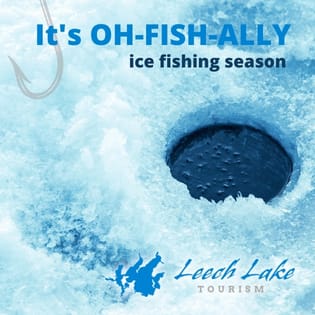When you are facing high pressure situations with neutral or negative panfish, one of the best ways to trigger those fish into biting is by adjusting your jig weight and the drop speed of your presentation.
The Importance of Jig Weight
Jig weight can be critically important when you’re out ice fishing for panfish. Heavier baits can be very effective and efficient when you’re targeting active fish that are more willing to bite.
On the other end of the spectrum, a smaller profile tungsten lure might be optimal when you need to coax hesitant biters.
The overall attitude of the fish in a lake can vary from hour to hour, so be ready to change in a hurry when things shift!
Because things can change so quickly on the ice it is important to be prepared with multiple jigs sizes and colors. A simple change from a 1/32 oz to a 1/64 oz jig can make all the difference.
Some days going to a heavier bait is going to trigger more strikes. Monitoring your drop speed and jig weight is one thing you can do as an angler to put more fish topside in tough fishing conditions.
Ice fishing for panfish like crappies or bluegills requires careful consideration of jig weight. The drop speed and weight of the bait are crucial factors, especially when the fish are inactive. Currently, we are experiencing high pressure, which makes the fish less active. In such conditions, it is essential to use a light bait.
When selecting baits for ice fishing, it is important to have a variety of options. In my selection, I have one-sixteenth ounce tungsten tubby jigs from DMC, which are relatively heavy. I also have one-thirty-second ounce jigs and even microscopic 1/64th ounce baits. These tiny baits are particularly effective when the fish are extremely inactive.
Additionally, I have chandelier jigs and tungsten ice flies in my arsenal. These baits come into play when the light conditions are low, and the fish become more aggressive. By adding a couple of waxes or even fishing the chandelier jig by itself, I can trigger the fish into biting. The key is to be willing to experiment with different baits and techniques.
One of the main factors to consider when choosing a bait is the size. When the fish are inactive, using microscopic baits like wax worms, gyro larvae, or tiny plastic baits can be the key to catching them. These small baits mimic the natural food sources of the fish and entice them to bite. The drop speed of the bait is also important. Inactive fish prefer a slow-falling bait, so using lightweight baits ensures that the bait falls slowly through the water column, giving the fish ample time to notice and strike.
On the other hand, when the fish are more active, such as during low light conditions, using slightly heavier baits like chandelier jigs and tungsten ice flies can be effective. These baits have a faster drop speed and can be fished more aggressively. Adding a couple of waxes to the bait can further entice the fish to bite. In some cases, you may not even need live bait like minnows, as the aggressive movement of the chandelier jig alone can trigger the fish into biting.
It’s important to pay attention to your depth finder and the attitude of the fish while ice fishing. Observing how the fish are behaving and responding to different baits can give you valuable insights into what they are currently feeding on and what type of presentation they prefer. Experimenting with different baits and techniques is key to finding success on the ice.
In conclusion, when ice fishing for panfish like crappies or bluegills, the weight and drop speed of the bait are crucial factors to consider. Inactive fish require light, slow-falling baits like microscopic jigs and plastics, while more active fish may respond better to slightly heavier baits like chandelier jigs and tungsten ice flies. Being willing to experiment and adapt to the conditions and the fish’s behavior is the key to catching them. Paying attention to your depth finder and observing the fish’s attitude can provide valuable insights into what baits and techniques are most effective. Remember, ice fishing is all about adapting and being willing to try new things. So next time you’re out on the ice, make sure to have a variety of baits in your tackle box and be ready to experiment to find what works best for the fish on that particular day.










